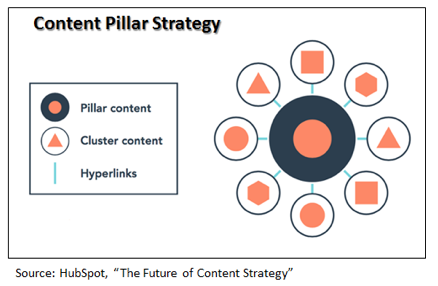New Rules for Professional Services Firm Marketing
Rule 3: Measure, Measure, Measure Those Marketing KPI’s
Fourth in a series of posts about the transformations in CPA, law and consulting firm marketingPrior to this posting, I discussed several of the new rules for professional services marketing that are key to top line growth and important considerations for new business strategies. Re-thinking of marketing as an investment, and demanding accountability were previously covered, and today, I’d like to present some observations and guidance on marketing KPIs – Key Performance Indicators.
There are dozens and dozens of different types of marketing KPIs that can be measured, but for most smaller and mid-sized accounting, law and consulting firms, you should consider concentrating on a handful, as it’s possible to go into analysis paralysis. A half dozen or so KPIs may be all that you really need for assessing your firm’s progress against growth strategies and niche market development.
I’m going to focus today’s post on KPIs related to lead generation programs, and some fundamental measurements. We’re seeking ROI from investments your firm is making in marketing and business development. At the level of lead generation, we need to concentrate on: (1) the overall effectiveness of the lead generation campaign, (2) what tactics are most effective in acquiring leads, and (3) the success the firm has in converting those leads to engagements.
For each lead generation program or campaign you execute, here are a few recommendations for KPIs:
Suspects to Eyeballs (raw number and %) -: This will provide an indication of how many people out of the total list of suspects you reached in your outbound marketing strategy opened or saw your message. There is powerful new marketing technology and software available to do this measurement
Eyeballs to Leads(raw number and %) - This is a measure of how many eyeballs actually took you up on your offer and ordered a white paper or agreed to attend a webinar. This information is generally secured when the eyeball completes and submits some type of form. This measure provides insight on changes to your message or offer that might be necessary if eyeballs are not converting on your lead generation campaign’s landing page.
Leads to Qualified Leads (raw number and %) - This is a measurement of the status and effectiveness of your firm’s lead nurturing program. You’ll want continually move a lead down the sales conversion funnel until the point where the key decision makers with budget authority appear to be ready to listen to a sales presentation. This KPI will give you insight as the effectiveness of your lead nurturing program
Qualified Leads to Proposal (raw number and %) – You’ll want to keep a running tally of proposals that originated in a lead generation program or where a lead was touched by a specific lead generation campaign. This is a great KPI to measure the effectiveness and efficiency of your business development staff and rainmaker's capabilities, as moving qualified leads to the RFP stage should be a fundamental part of their accountability for growing the top line.
Proposal to Engagement (raw number and %) – This KPI serves two purposes. First, it provides the metric on proposal win rates, and if this measurement is not as high as possible, then you’ve got an insight that your proposal process or methodology needs re-engineering. It also is an important part of metrics for measuring the ROI from any specific campaign, or in the aggregate, for your lead generation program
The last KPI, and without argument the most important, is Dollars of New Business Wins.
Measuring these KPIs provides a direct line to assessing the ROI from your investment in marketing and business development. They provide observation and insight for making tweaks to lead generation campaigns, where to spend budget for outbound marketing efforts, and metrics that reveal both the length of time and level of effort necessary for converting a suspect to an eyeball.

By coordinating the metrics capabilities of e-mail programs with lead acquisition and tracking software and a CRM, you can design reports around these (and other) marketing KPIs that let you assess the ROI on your marketing spend.
In the new rules for marketing professional services, these steps represent the core of the infrastructure you’ll want to have in place in order to be responsive to the transformative changes that are occurring in CPA, legal, and consulting marketing.
.png)







Leave a Comment